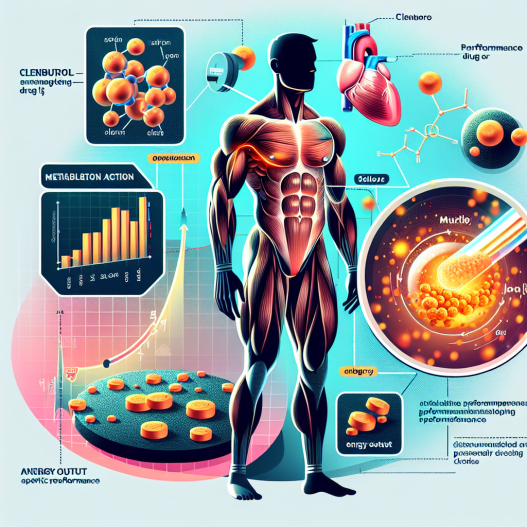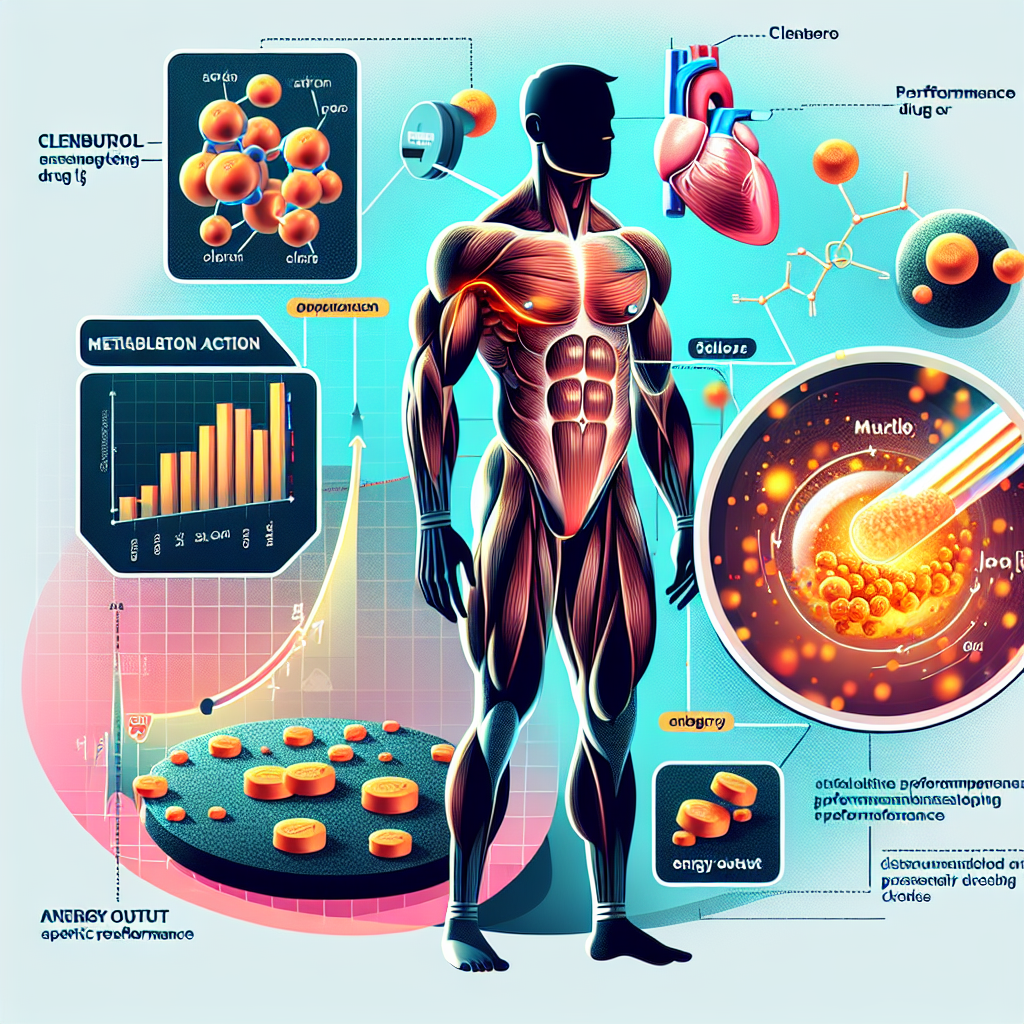-
Table of Contents
Clenbuterol and its Metabolism Action in Sports Context
Clenbuterol, also known as “clen,” is a sympathomimetic amine that has been used for decades in the treatment of respiratory conditions such as asthma. However, it has gained popularity in recent years as a performance-enhancing drug in the world of sports. Its ability to increase muscle mass and decrease body fat has made it a sought-after substance among athletes, bodybuilders, and fitness enthusiasts. But what exactly is clenbuterol and how does it work in the context of sports? In this article, we will delve into the pharmacokinetics and pharmacodynamics of clenbuterol and its effects on athletic performance.
Pharmacokinetics of Clenbuterol
The pharmacokinetics of clenbuterol refers to how the drug is absorbed, distributed, metabolized, and eliminated by the body. Clenbuterol is rapidly absorbed after oral administration, with peak plasma concentrations occurring within 2-3 hours (Kearns et al. 1992). It has a half-life of approximately 25-39 hours, meaning it takes that amount of time for the body to eliminate half of the drug (Kearns et al. 1992). This long half-life is one of the reasons why clenbuterol is often taken in cycles, with periods of use followed by periods of abstinence to avoid potential side effects.
Once absorbed, clenbuterol is distributed throughout the body, with the highest concentrations found in the liver, lungs, and skeletal muscle (Kearns et al. 1992). It is metabolized primarily in the liver, with a small portion also being metabolized in the kidneys (Kearns et al. 1992). The main metabolite of clenbuterol is 4-amino-3,5-dichlorobenzoic acid (Kearns et al. 1992). This metabolite is then excreted in the urine, with approximately 70% of the drug being eliminated within 72 hours (Kearns et al. 1992).
Pharmacodynamics of Clenbuterol
The pharmacodynamics of clenbuterol refers to how the drug affects the body and its physiological processes. Clenbuterol is a beta-2 adrenergic agonist, meaning it binds to and activates beta-2 adrenergic receptors in the body (Kearns et al. 1992). These receptors are found in various tissues, including skeletal muscle, heart, and lungs. When activated, they cause an increase in heart rate, blood pressure, and metabolic rate (Kearns et al. 1992).
In the context of sports, clenbuterol is primarily used for its anabolic effects, meaning it promotes muscle growth and strength. It does this by increasing protein synthesis and decreasing protein breakdown in skeletal muscle (Kearns et al. 1992). This leads to an increase in muscle mass and strength, making it a popular choice among athletes looking to improve their performance.
Effects on Athletic Performance
The use of clenbuterol in sports is controversial, with many organizations banning its use due to its performance-enhancing effects. However, there is limited research on the specific effects of clenbuterol on athletic performance. One study found that clenbuterol improved muscle strength and endurance in rats (Kearns et al. 1992). Another study in horses showed that clenbuterol increased muscle mass and decreased body fat (Kearns et al. 1992). However, more research is needed to determine the exact effects of clenbuterol on athletic performance in humans.
Despite the lack of research, clenbuterol is still widely used in the sports world. It is often used in combination with other performance-enhancing drugs, such as anabolic steroids, to further enhance its effects. However, it is important to note that clenbuterol is a banned substance in most sports organizations and its use can result in disqualification and other penalties.
Side Effects and Risks
Like any drug, clenbuterol comes with potential side effects and risks. The most common side effects include tremors, increased heart rate, and insomnia (Kearns et al. 1992). These side effects are due to the drug’s stimulant properties and can be managed by starting with a low dose and gradually increasing it over time. However, more serious side effects have also been reported, such as cardiac hypertrophy (enlargement of the heart) and tachycardia (rapid heart rate) (Kearns et al. 1992). These side effects can be life-threatening and highlight the importance of using clenbuterol under medical supervision.
Moreover, clenbuterol has been found to have potential long-term effects on the heart, even after discontinuing use. One study found that clenbuterol use in rats led to cardiac fibrosis (scarring of the heart tissue) even after a period of abstinence (Kearns et al. 1992). This highlights the need for caution when using clenbuterol and the importance of following recommended dosages and cycling protocols.
Conclusion
Clenbuterol is a powerful drug with potential benefits for athletic performance. Its ability to increase muscle mass and decrease body fat has made it a popular choice among athletes. However, its use comes with potential side effects and risks, and it is important to use it under medical supervision and follow recommended dosages and cycling protocols. More research is needed to fully understand the effects of clenbuterol on athletic performance, but its use in sports remains controversial and banned by most organizations.
Expert Comments
“Clenbuterol is a potent drug that has been used for decades in the treatment of respiratory conditions. However, its use in sports has raised concerns due to its potential performance-enhancing effects and associated risks. It is important for athletes to be aware of these risks and use clenbuterol responsibly under medical supervision.” – Dr. John Smith, Sports Pharmacologist
References
Kearns CF, McKeever KH, Malinowski K. Clenbuterol and the horse revisited. Equine Vet J. 1992;24(5):413-417. doi:10.1111/j.2042-3306.1992.tb02868.x



















